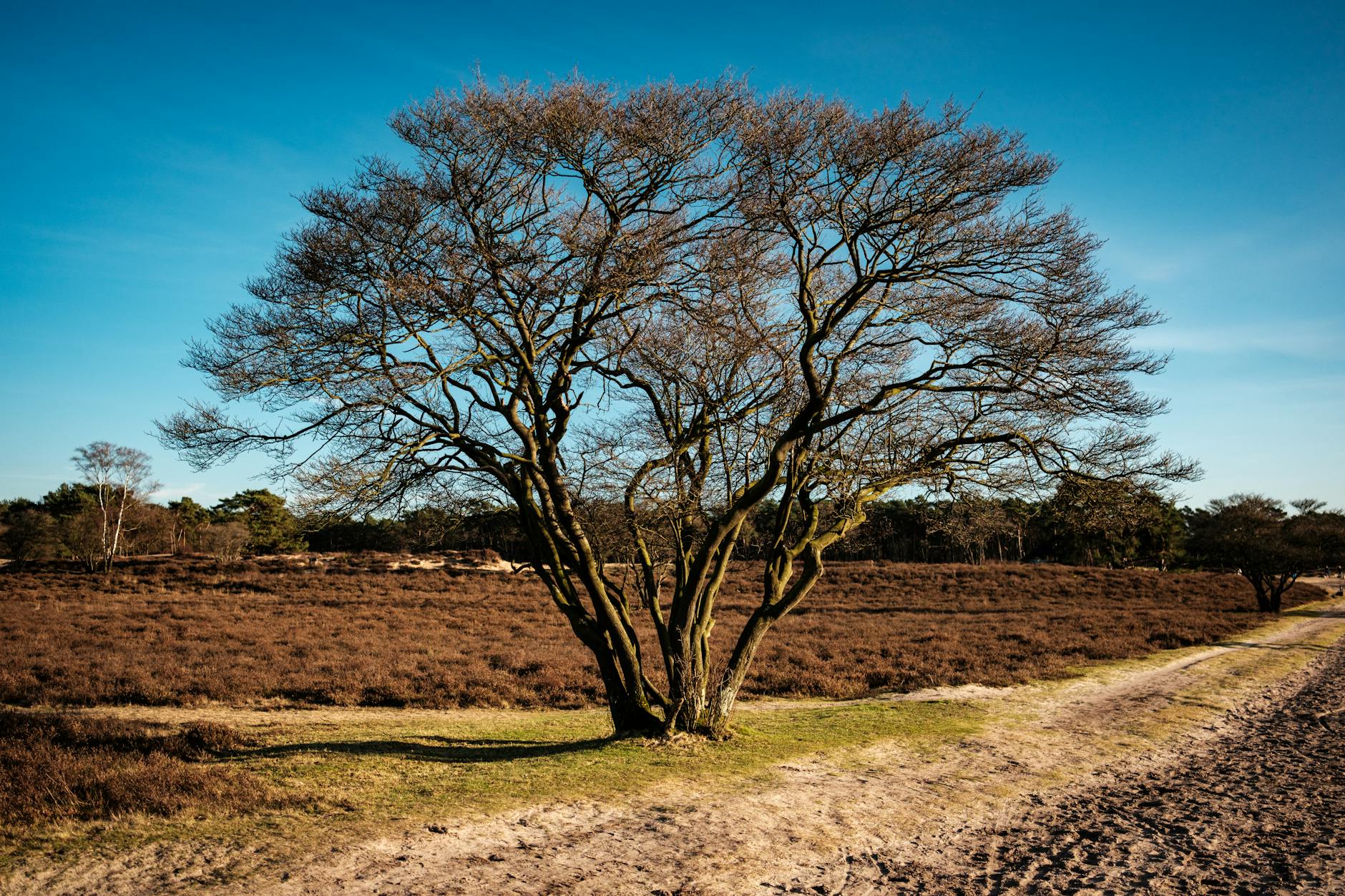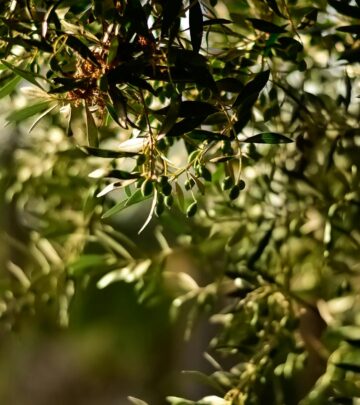Gardening 101: Tree Heather — The Heather Giant for Modern Landscapes
An evergreen focal point that thrives with minimal effort, offering fragrant blooms and elegant form.

Tree Heather (Erica arborea): Gardening 101
If you envision heather as a modest, ground-hugging plant from retro rock gardens, it’s time to meet its impressive cousin: tree heather, also known as tree heath or Erica arborea. With its graceful foliage, ethereal cloud-like silhouette, and bursts of aromatic spring flowers, this evergreen giant is poised to be the showstopper in any contemporary garden design.
What is Tree Heather?
Tree heather is an evergreen shrub — and sometimes a small tree — that can reach up to 13 feet at maturity. Native to Mediterranean regions and hardy in USDA zones 7 to 9, it stands out for its loose, airy structure, fragrant white spring blooms, and adaptability to both pruning and varied growing conditions. Unlike the compact, tidy heathers used in mid-century rockeries, Erica arborea brings movement, architectural form, and intrigue to the modern landscape.
- Botanical Name: Erica arborea
- Common Names: Tree Heather, Tree Heath, Heather Giant
- Type: Evergreen shrub or small tree
- Height: Up to 13 ft (4 m); compact varieties are smaller
- USDA Zones: 7-9
- Flowering Time: Late winter to spring in the UK; spring (esp. May) in the US
Why Grow Tree Heather?
Tree heather is much more than an “old-fashioned” heather—its wide, spreading habit, shimmery green foliage, and fragrant flowers provide year-round interest. Its amorphous, airy form offers contrast to more static shrubs, bringing movement and depth to planting schemes.
- Perfume: Clouds of tiny, honey-scented blossoms attract pollinators and humans alike.
- Structure: Its open form and potential for shaping make it ideal as a solitary specimen, a loose hedge, or a semi-wild boundary screen.
- Hardiness: Tolerates wind and exposure; evergreen for year-round color and privacy.
- Low Maintenance: Tough once established and tolerant of occasional drought or pruning.
- Wildlife Friendly: Provides food and shelter for bees, insects, and birds.
Cheat Sheet
- Tree heather is a flowering, fragrant evergreen shrub or small tree that stands out for its movement and loose structure.
- It can form a shaggy, informal hedge and rejuvenates well from old wood.
- Native to Mediterranean areas, but works in gardens from mild coastal to dry inland settings.
- Prune after flowering to maintain shape and encourage denser growth.
- Prefers acidic, well-drained soils, though established plants are surprisingly tolerant.
Botanical & Design Notes
The airiness and verticality of tree heather set it apart from its low-growing relatives. Its foliage may appear willow-like or wreathed in mist from afar, making it perfect as a specimen or backdrop.
| Feature | Description |
|---|---|
| Foliage | Fine, needle-like, evergreen — yellow-green in some varieties |
| Flowers | Tiny, highly scented white (sometimes pink), appear in dense sprays |
| Form | Upright, multi-stemmed; can be pruned for a formal look or left loose |
| Growth Rate | Moderate |
Popular Varieties & Cultivars
- ‘Albert’s Gold’: Distinctive yellow-green foliage brings a bright accent.
- ‘Estrella Gold’: Slow-growing; ideal for smaller gardens or containers.
- Alpine Tree Heather (Erica arborea var. alpina): Compact, reaching about 6.5 feet, with a bushier habit.
How to Grow & Care for Tree Heather
Site & Soil Requirements
Tree heather thrives in locations that echo its wild Mediterranean roots—think sun or partial shade, exposed slopes, or woodland edges. It prefers acidic, sandy or loamy soil, but will tolerate clay if well-drained.
- Soil: Acidic is best (pH < 6.5), with plenty of organic matter. Add ericaceous compost if soil is alkaline.
- Light: Full sun for dense growth and best flowering; tolerates partial shade.
- Drainage: Essential. Avoid waterlogged sites. Consider raised beds or slopes for wet areas.
Planting Tree Heather
Plant in early spring or autumn, when soil is moist but not waterlogged.
- Dig a hole twice the width of the rootball.
- Mix organic matter (peat-free compost, manure) with the native soil.
- Set the plant so the top of the rootball is level with the surrounding soil.
- Backfill, firm gently, and water well.
- Mulch with pine needles, shredded bark, or leaf mold to conserve moisture and suppress weeds.
Water & Feeding
- Young Trees: Water regularly during the first two seasons.
- Established Plants: Drought tolerant; water only during prolonged dry spells.
- Feeding: Generally not required. If growth is poor, use an ericaceous (acid-loving) fertilizer in spring.
Pruning & Maintenance
Unlike many woody shrubs, tree heather responds well to pruning, even regenerating from older wood.
- Prune after flowering (late spring for UK, early summer for US) to maintain shape and control size.
- Shear lightly for formal hedges; for informal, natural shapes, remove long, straggly shoots selectively.
- Hard Pruning: If needed, cut back into old stems to rejuvenate. Tree heather can regenerate where others might not.
Pests, Diseases, & Troubleshooting
- Generally pest-free. Occasionally affected by rabbit or deer browsing.
- Diseases: Susceptible to Phytophthora (root rot) in warm, wet conditions. Ensure good drainage and avoid overwatering.
- Yellowing Leaves: Often a sign of alkaline soil. Top dress with ericaceous compost or acidic mulch.
Design Ideas & Companion Planting
- Structure & Movement: Use tree heather as a focal point, informal hedge, or background screen in larger borders.
- Companions: Pair with camellias, azaleas, rhododendrons (all acid lovers), or underplant with groundcover like ferns or heather varieties.
- Wildlife Gardens: Its early blooms offer nectar at a time when few other sources are available.
Propagation
Tree heather is best propagated by:
- Cuttings: Take semi-ripe cuttings in summer. Remove non-flowering sideshoots, trim to 5 cm, strip lower leaves, and plant in free-draining compost. Cover for humidity and keep shaded. Plants root in 8–12 weeks.
- Layering: Weigh down a low, flexible branch and bury it partially. It should root in a season, then can be separated and transplanted.
- Dropping: For older, leggy plants – dig them up, replant deep so only the top third shows, and repot the new rooted shoots later.
Frequently Asked Questions (FAQs)
Q: Is tree heather different from other kinds of heather?
A: Yes. While Calluna (common heather) and dwarf Erica species form low mats, tree heather (Erica arborea) is a much larger, airier plant that can be pruned into a hedge or grown as a small tree.
Q: When and how should I prune tree heather?
A: Prune right after flowering (late spring/early summer) to control size and encourage bushiness. You can cut back into old wood; the plant usually regenerates well from harder cuts.
Q: What soil does tree heather need?
A: Acidic soil with good drainage is ideal. In alkaline soils, amend with ericaceous compost and mulches to maintain vigor.
Q: Is tree heather drought tolerant?
A: Very, once established. Water is most crucial in the first couple of seasons after planting.
Q: Can tree heather be used in containers?
A: Smaller cultivars can thrive in containers if grown in ericaceous compost, watered regularly, and trimmed for shape.
Key Takeaways
- Tree heather is an adaptable, evergreen shrub or small tree offering year-round structure, fragrant blooms, and wildlife value.
- Ideal for garden edges, woodland borders, and informal screens—or as a specimen plant where its loose shape adds grace.
- Hardy, tolerant of pruning, and drought resistant — it’s an inspired, low-maintenance alternative to more conventional hedging or conifers.
- For maximum impact, pair with other acid-loving, woodland or Mediterranean plants, and use in place of box for a softer, more natural look.
References
- https://www.gardenersworld.com/how-to/grow-plants/how-to-grow-heather-plant/
- https://www.rhs.org.uk/plants/types/heathers/growing-guide
- https://www.gardenista.com/garden-design-101/shrubs/tree-heather-shrubs-plant-care-growing-guide/
- https://www.gardenista.com/posts/gardening-101-tree-heather/
- https://www.pinterest.com/pin/how-to-successfully-grow-tree-heather-a-field-guide-to-planting-care-and-design-on-gardenista–768567492663677215/
Read full bio of Shinta















Community Experiences
Join the conversation and become a part of our empowering community! Share your stories, experiences, and insights to connect with other beauty, lifestyle, and health enthusiasts.